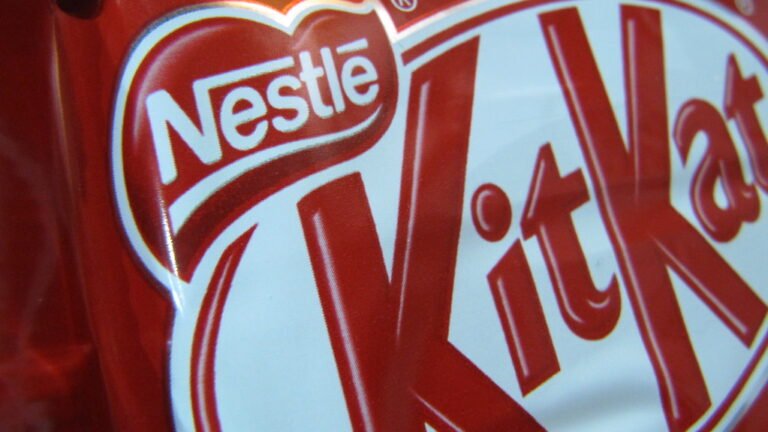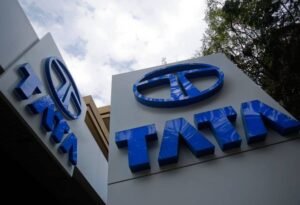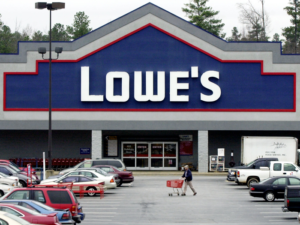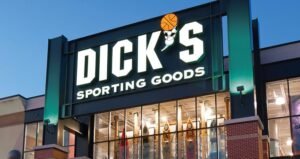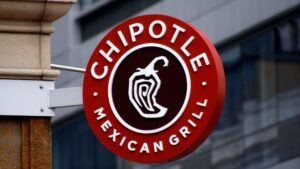Nestle is a global food giant that has a strong presence in the market. With a market capitalization of over $330 billion, it is one of the largest food companies in the world. Nestle has a highly diversified portfolio with more than 2000 brands and a presence in 186 countries. The company’s strengths include its size and market dominance, renowned brand name, highly diversified product portfolio, and global presence.
Jump Ahead To :
Key Takeaways:
- Nestle is one of the largest food companies in the world with a market capitalization of over $330 billion.
- The company has a highly diversified portfolio with more than 2000 brands.
- Nestle has a strong global presence in 186 countries.
- The company’s strengths include its size, market dominance, renowned brand name, and highly diversified product portfolio.
- Nestle’s SWOT analysis reveals its strengths, weaknesses, opportunities, and threats.
Company Overview
Nestle: A Swiss Food Company With Global Presence
Nestle, founded in 1905, is a renowned Swiss food company, known for its diverse range of products and global reach. With its headquarters in Vevey, Switzerland, Nestle has established itself as a leader in the food industry. Employing a total of 276,000 individuals, Nestle operates in 186 countries, catering to a wide customer base.
| Nestle Information | |
|---|---|
| Industry | Food |
| Foundation | 1905 |
| Headquarters | Vevey, Switzerland |
| Employees | 276,000 |
| Presence | 186 countries |
| Ticker Symbol | NESN | NSRGY |
Nestle offers a wide range of products to meet the diverse needs of consumers. Its product portfolio includes ambient dairy, chilled dairy, coffee, bottled water, juices, culinary and foods, confectionery, baby food, and breakfast cereals. Nestle has built a strong reputation in the food industry, delivering high-quality products that cater to global tastes and preferences.

Nestle’s Strengths
Nestle, being one of the largest food companies globally, possesses several key strengths that contribute to its market dominance and reputation:
- The first strength is Nestle’s size and market dominance, which sets it apart as one of the largest food companies in the world. With a market capitalization exceeding $330 billion, Nestle’s sheer scale enables it to exert significant influence in the industry.
- Moreover, the company boasts a renowned brand name that resonates with consumers worldwide. Nestle’s reputation as a reputed brand enhances its credibility and fosters customer loyalty.
- Another significant strength lies in Nestle’s high brand valuation, which currently stands at an impressive $10.6 billion. This valuation underscores the trust and value associated with the Nestle brand.
- Nestle’s highly diversified portfolio, comprising over 2000 brands, further consolidates its position in the market. This diversification allows Nestle to cater to a wide range of consumer preferences and adapt to changing market dynamics.
- Lastly, Nestle’s global presence in 186 countries plays a pivotal role in its success. The company’s extensive international footprint enables it to tap into diverse markets and capitalize on emerging opportunities.
These strengths collectively contribute to Nestle’s competitive advantage and bolster its position as a formidable force in the food industry.
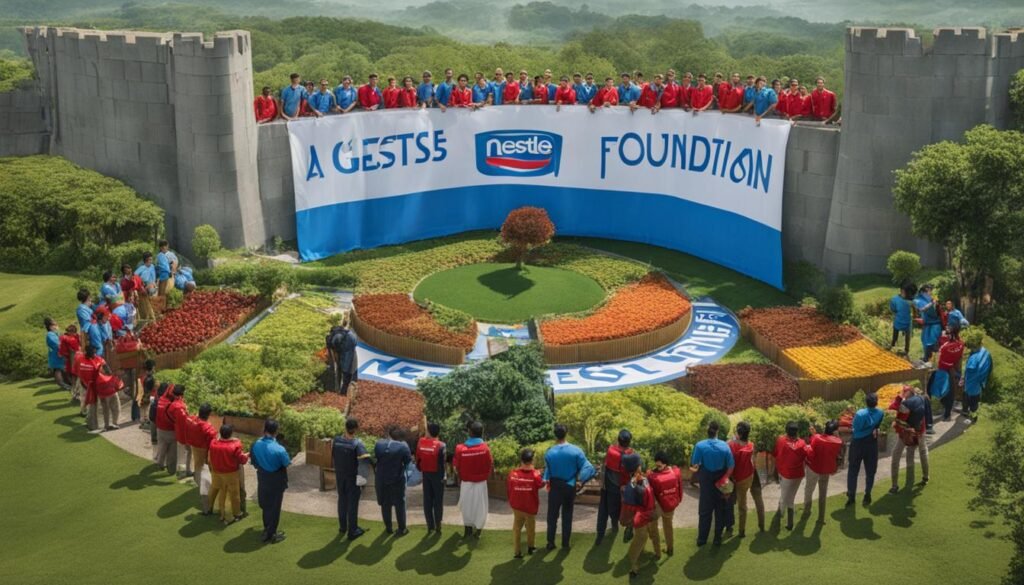
| Strengths | Description |
|---|---|
| Size and Market Dominance | One of the largest food companies globally with a market capitalization exceeding $330 billion. |
| Reputed Brand Name | A renowned brand that enjoys widespread recognition and loyalty among consumers. |
| Brand Valuation | High brand valuation of $10.6 billion, reflecting the trust and value associated with the Nestle brand. |
| Highly Diversified Portfolio | More than 2000 brands offering a wide range of products to cater to diverse consumer preferences. |
| Global Presence | Operations in 186 countries, allowing Nestle to tap into various markets and seize international opportunities. |
These strengths provide Nestle with a solid foundation to navigate the competitive landscape and sustain its growth in the global food industry.
Nestle’s Weaknesses
Nestle, despite its strong market presence and global dominance, does face certain weaknesses that can hinder its performance and reputation in the industry.
One of the key weaknesses faced by Nestle is the increase in prices of its products. This is primarily due to rising raw material and transportation costs, which directly impact the company’s profitability. Consequently, Nestle must navigate the challenge of maintaining competitive pricing while managing its cost structure effectively.
Additionally, Nestle’s organizational structure presents a weakness in the form of a complex span of control. With a large number of brands under its umbrella, managing and coordinating operations can be challenging, leading to potential inefficiencies. Streamlining and simplifying the organizational structure may help Nestle to optimize its performance and enhance operational effectiveness.
“Nestle, despite its strengths and global presence, faces certain weaknesses that can hinder its performance and reputation in the industry.”
Furthermore, Nestle has been involved in water controversies, particularly related to water pumping practices. These controversies have raised concerns over the company’s environmental impact and sustainability practices. Nestle must address these issues effectively to mitigate reputational damage and ensure sustainable practices in water resource management.
Nestle has also faced social criticisms pertaining to various aspects of its operations. These criticisms range from marketing practices targeting vulnerable populations, such as children, to labor and human rights concerns. The company needs to address these criticisms proactively, demonstrating its commitment to ethical business practices and social responsibility.
“Nestle must address water controversies and social criticisms to mitigate reputational damage and ensure ethical business practices.”
To provide a visual representation of Nestle’s weaknesses, refer to the table below:
| Weaknesses | Description |
|---|---|
| Increase in Prices | Rising raw material and transportation costs impacting product pricing |
| Complex Organizational Structure | Challenges in managing and coordinating operations due to a vast number of brands |
| Water Controversy | Controversies related to water pumping practices and environmental sustainability |
| Social Criticisms | Criticisms regarding marketing practices and labor/human rights concerns |
*Table showcasing Nestle’s weaknesses.
Overcoming these weaknesses is crucial for Nestle to maintain its strong market position and uphold its reputation as a responsible corporate entity. By addressing pricing challenges, streamlining its organizational structure, resolving water controversies, and actively responding to social criticisms, Nestle can strive towards sustainable growth and continued success in the highly competitive food industry.

Nestle’s Opportunities
Nestle, being a global food giant, has various opportunities to capitalize on its strengths and expand its market presence. These opportunities include:
- Increasing Transparency: Nestle can enhance consumer trust and loyalty by providing detailed information about its sourcing and operations. Transparent communication about the origin and quality of ingredients can help build stronger connections with consumers.
- Embracing Sustainability: By focusing on sustainable practices, Nestle can reduce costs, increase efficiency, and contribute to environmental conservation. Implementing eco-friendly initiatives and sustainable sourcing methods can also attract environmentally-conscious consumers.
- Benefiting from Increasing Disposable Income: The rise in disposable income in Asia, Oceania, and Sub-Saharan regions presents a significant opportunity for Nestle. Expanding operations and targeting these growing markets can result in increased sales and market share
- Diversifying Product Portfolios: Nestle can leverage its extensive resources and expertise to branch out into new sectors and expand its already diversified product portfolio. By introducing innovative products and entering niche markets, the company can tap into new revenue streams.
“Nestle has the potential to meet growing consumer demands by increasing transparency, embracing sustainability, targeting regions with rising disposable incomes, and diversifying its product offerings.”
By capitalizing on these opportunities, Nestle can continue to grow and stay ahead in the competitive food industry.
Market Expansion and Strategic Alliances
Nestle can consider expanding its operations into new markets and forming strategic alliances to drive growth and competitiveness. By entering emerging markets and partnering with local businesses, Nestle can access new consumer bases and gain market share. Collaborations with complementary companies can also lead to synergies in product development, distribution, and marketing efforts.
Nestle’s Threats
Nestle, as a global food giant, faces several threats that have the potential to impact its operations and brand presence. Two significant threats that Nestle needs to address are the climate impact on its raw materials and the strategic investment choices it makes.
Climate Impact: Nestle relies on key raw materials like coffee, wheat, and dairy for its diverse range of products. However, the changing climate poses a threat to the availability and quality of these essential resources. Droughts, floods, and extreme weather events can disrupt the agricultural supply chains, leading to increased costs and potential shortages. Nestle needs to take proactive measures to mitigate the climate impact on its raw materials by fostering sustainable farming practices, investing in research and development, and exploring alternative sourcing options.
Strategic Investment Choices: Making strategic investment choices is crucial for Nestle’s long-term success. The company needs to carefully evaluate potential investments, ensuring they align with its core values, growth objectives, and market trends. Poor investment decisions can lead to financial losses, brand dilution, and missed opportunities. Nestle should emphasize thorough market analysis, risk assessment, and due diligence before making significant investments to maintain its competitive edge and sustain its market leadership.
“The success of Nestle hinges on effectively addressing these threats, as they have the potential to disrupt the company’s supply chain, increase costs, and damage its brand reputation.”
To further illustrate Nestle’s threats, refer to the table below:
| Threats |
|---|
| Climate Impact |
| Strategic Investment Choices |
Nestle’s Market Analysis
Nestle, the global food giant, has established a strong presence in various market segments, contributing to its revenue diversification and market stability. The company’s extensive product portfolio encompasses a wide range of offerings, ensuring a widespread market reach.
Powdered and Liquid Beverages
Nestle has successfully captured the powdered and liquid beverage market with its popular brands such as Nescafe, Nesquik, and Milo. These products cater to different consumer preferences and have gained a significant market share.
Petcare
In the petcare industry, Nestle’s brands like Purina and Felix have secured a dominant position. With a focus on providing high-quality nutrition for pets, Nestle has tapped into the growing pet ownership trend.
Nutrition and Health Science
Nestle’s commitment to nutrition and health science is evident through its brands like Nestle Health Science and Nestle Nutrition. These products target specific dietary needs and promote overall well-being.
Prepared Dishes and Cooking Aids
Nestle also offers a range of prepared dishes and cooking aids under brands like Lean Cuisine and Maggi. These convenient and time-saving solutions have gained popularity among consumers seeking quick meal solutions.
Milk Products and Ice Cream
Milk products and ice cream are another significant market segment for Nestle. With brands like Nestle Milkmaid and Haagen-Dazs, the company caters to consumers’ dairy cravings and offers indulgent treats.
Confectionery
Nestle’s confectionery brands, including KitKat, Smarties, and Crunch, have a loyal consumer base globally. The company’s innovative confectionery products and brand recognition have contributed to its market success.
Water Products
Nestle’s water products, such as Nestle Pure Life and Perrier, have gained prominence in the bottled water industry. With growing concerns about water quality and health, Nestle has positioned itself as a trusted provider of safe and refreshing drinking water.
By maintaining a strong presence in these diverse market segments, Nestle ensures a stable revenue stream and taps into consumer demand across various product categories.
| Market Segment | Key Brands |
|---|---|
| Powdered and Liquid Beverages | Nescafe, Nesquik, Milo |
| Petcare | Purina, Felix |
| Nutrition and Health Science | Nestle Health Science, Nestle Nutrition |
| Prepared Dishes and Cooking Aids | Lean Cuisine, Maggi |
| Milk Products and Ice Cream | Nestle Milkmaid, Haagen-Dazs |
| Confectionery | KitKat, Smarties, Crunch |
| Water Products | Nestle Pure Life, Perrier |
Nestle’s Competitive Advantage
Nestle, a global food giant, possesses several competitive advantages that solidify its position in the market. These advantages contribute to the company’s market dominance and ability to outperform its competitors.
Global Presence
Nestle’s extensive global presence sets it apart from its rivals. With operations in 186 countries, the company has established a strong foothold in diverse markets. This global reach allows Nestle to tap into a wide range of consumer preferences and effectively cater to local demands.
Strong Brand Name
The strength of Nestle’s brand name is a significant competitive advantage. The company’s reputation for delivering quality products and maintaining high safety standards has earned the trust and loyalty of consumers worldwide. Nestle’s brand value and recognition enable it to attract customers and maintain a strong market position.
Efficient R&D System
Nestle’s efficient research and development (R&D) system enables the company to continually innovate and develop new products tailored to consumer needs. By investing in cutting-edge technology and employing top-notch scientists and researchers, Nestle stays at the forefront of the industry. This R&D prowess ensures that the company can introduce new and improved products, keeping it ahead of competitors.
Environmental Sustainability Practices
Nestle’s commitment to environmental sustainability is a key competitive advantage. The company has implemented various initiatives to minimize its environmental impact, such as reducing greenhouse gas emissions, conserving water resources, and promoting sustainable packaging solutions. These practices resonate with eco-conscious consumers and enhance Nestle’s brand reputation.
Large Distribution System
Nestle’s extensive distribution system provides a competitive edge in reaching customers across the globe. The company’s well-established network of distribution centers and partnerships ensures efficient and timely delivery of its products. This widespread distribution system enables Nestle to meet consumer demand promptly, contributing to its market dominance.
Through its global presence, strong brand name, efficient R&D system, environmental sustainability practices, and large distribution system, Nestle maintains a competitive advantage in the food industry. These advantages allow the company to thrive in a highly competitive landscape and stay ahead of its rivals.
Nestle’s SWOT Analysis Conclusion
The SWOT analysis of Nestle provides a comprehensive evaluation of the company’s strengths, weaknesses, opportunities, and threats. Understanding these factors is crucial for strategic decision-making, enabling Nestle to capitalize on its strengths, address weaknesses, explore opportunities, and proactively manage threats.
Strengths:
- Market Dominance: Nestle’s position as one of the largest food companies globally, with a market capitalization of over $330 billion, demonstrates its dominance in the industry.
- Renowned Brand Name: Nestle’s brand recognition and reputation contribute to consumer trust and loyalty, providing a competitive edge.
- Highly Diversified Portfolio: With more than 2000 brands across various product categories, Nestle’s diversified portfolio mitigates risks and maximizes market reach.
- Global Presence: Nestle’s extensive presence in 186 countries ensures access to diverse markets and economies of scale.
Weaknesses:
- Increase in Prices: Nestle faces challenges from rising raw material and transportation costs, leading to potential price increases that could impact customer demand.
- Organizational Structure Challenges: Managing a large number of brands under the same umbrella may pose difficulties in coordination and decision-making.
Opportunities:
- Increasing Transparency: Nestle can enhance transparency by providing detailed information on its sourcing and operations, building trust with consumers.
- Sustainability: Embracing sustainable practices can reduce costs, enhance brand reputation, and attract environmentally conscious consumers.
- Diversifying Product Portfolios: Expanding into new product categories or innovating within existing ones can tap into emerging market trends and capture new customer segments.
Threats:
- Climate Impact: Nestle’s dependency on raw materials susceptible to climate change, such as coffee, wheat, and dairy, poses risks to the availability and cost of key ingredients.
- Strategic Investment Choices: Making sound strategic investment decisions is vital to avoid potential failures and sustain brand integrity.
Nestle’s awareness of its SWOT analysis enables the company to leverage its strengths, such as market dominance and a renowned brand name, while mitigating weaknesses, exploring opportunities, and proactively managing threats. By strategically aligning its actions with these insights, Nestle can strengthen its market position and drive sustainable growth.
Conclusion
In conclusion, Nestle, the global food giant, holds a strong market presence. Through a comprehensive SWOT analysis, we have identified its strengths, weaknesses, opportunities, and threats. Nestle’s market dominance is propelled by its size, reputable brand name, and diverse portfolio of products.
Within this competitive landscape, Nestle does face certain weaknesses, such as pricing challenges and organizational structural complexities. However, the company also has abundant opportunities to capitalize on. Increased transparency and sustainability initiatives can further enhance Nestle’s standing in the industry.
Nevertheless, Nestle is not exempt from external threats. Climate impact remains a concern, particularly in relation to its key raw materials, such as coffee, wheat, and dairy. Prudent decision-making in strategic investments is crucial for maintaining the company’s brand presence and longevity.
By harnessing its strengths and proactively addressing weaknesses, Nestle can continue to flourish amid the highly competitive food industry. As consumer demands evolve and new challenges emerge, Nestle’s commitment to growth and innovation will be instrumental in securing its position as a global leader.
